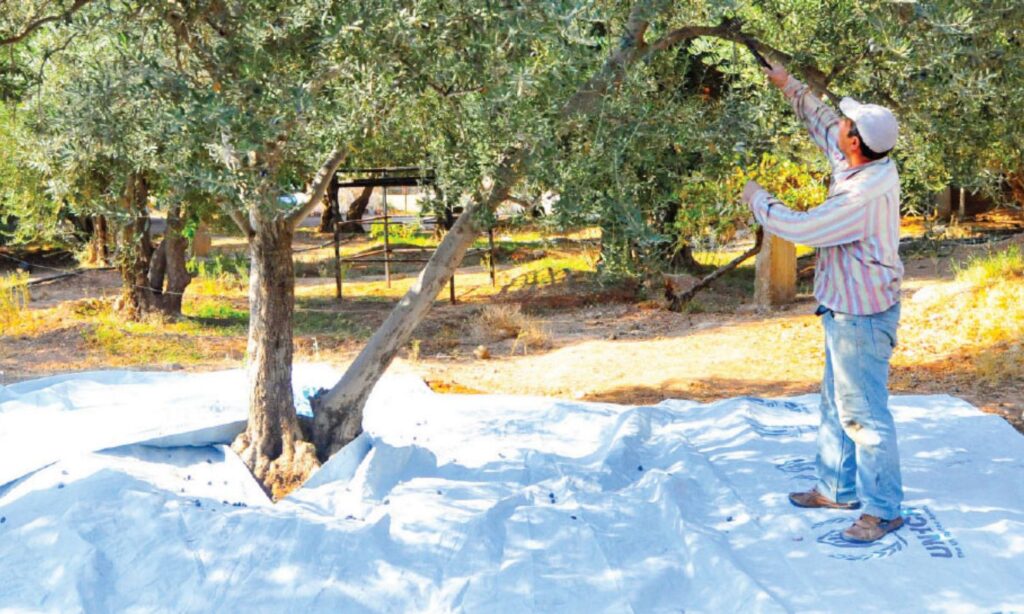The Ministry of Agriculture in the Syrian regime’s government estimated an 11% increase in olive production this season compared to the previous season.
Abir Jouhar, Director of the Olive Office in the Ministry of Agriculture, told the local Al-Watan newspaper on Thursday, September 26th, that the current season’s olive production in “safe areas” is estimated at about 430,000 tons.
She pointed out that 40% of olive trees in Syria are located outside the control of the Syrian regime, in rural Aleppo and Idlib.
The area planted with olives this year reached about 423,000 hectares, with more than 69 million trees, of which about 61 million are fruit-bearing and diverse.
This year’s highest olive production was in Hama governorate, with about 91,000 tons of olives.
The director explained that the largest portion of the production, approximately 344,000 tons, will be directed to pressing for olive oil production, expected to yield about 55,000 tons of olive oil, while 85,000 tons of production will be allocated for the manufacture of green table olives.
The per capita consumption of olive oil in Syria has dropped to its lowest levels, averaging 3 kilograms annually, whereas it previously ranged between 5 and 6 kilograms, according to the director.
She justified the decline in Syrians’ olive oil consumption as a result of current consumption habits due to economic conditions. Citizens can no longer afford to stock up on olive oil due to a lack of financial liquidity, so they resort to meeting their weekly or even daily needs from the material.
According to an Enab Baladi correspondent in Daraa, the price of a 16-liter can of olive oil today reaches 1 million Syrian pounds, while the price of green olives varies depending on the type, ranging between 10,000 and 12,000 pounds (1 dollar equals 14,800 pounds), noting that most of the quantities currently available in the market are from the last season.
Last year saw a 28% decrease in olive production in Syria compared to 2022, due to several reasons, including alternate bearing.
Alternate bearing is the tendency of the tree to bear a heavy crop one year and a very light crop, or sometimes none at all, the following year.
Other reasons for the decline in production include drought as one of the effects of climate change, lack of services, increased labor costs, and higher prices for production inputs, which have significantly increased costs for farmers, such as harvesting, pressing, packaging, and fertilizers, according to the government Al-Baath newspaper.
Total olive production across Syria last year was about 711,000 tons, of which about 304,000 tons were in areas under regime control, yielding 49,000 tons of olive oil for local consumption, according to Ministry of Agriculture estimates.
Syria ranked fourth globally among olive oil-producing countries from 2004 to 2008 but dropped to tenth place in 2019. Government officials blame sanctions and war, while the difficulty in securing agricultural supplies and lack of support are major reasons for the decline.

